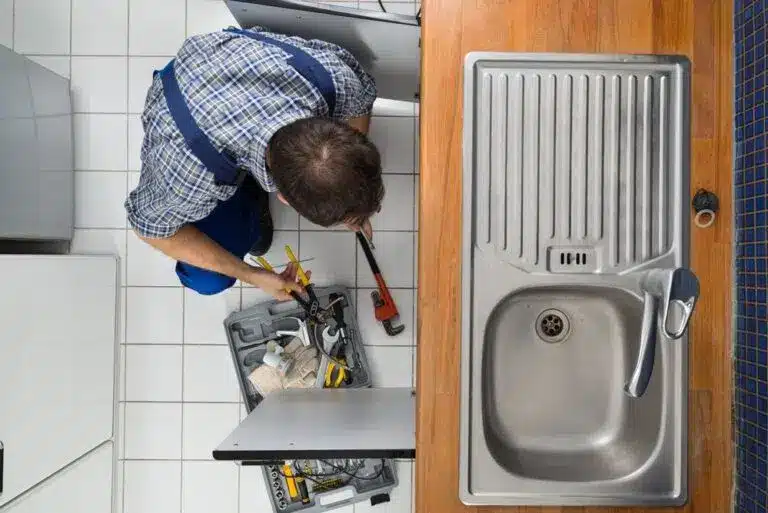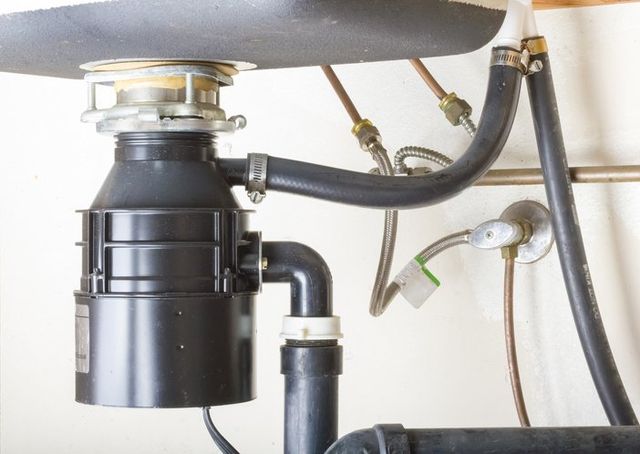Easy Ways to Repair a Leaky Waste Disposal Unit
Easy Ways to Repair a Leaky Waste Disposal Unit
Blog Article
What're your ideas about How to fix a pretty consistent leak from my garbage disposal?

Waste disposal unit are vital kitchen devices that assist in getting rid of food waste efficiently. Nonetheless, a leaking garbage disposal can be a discouraging and messy trouble to handle. The good news is, numerous leakages can be repaired conveniently with a few easy actions. In this article, we will go over just how to repair a dripping waste disposal unit effectively.
Introduction
Waste disposal unit are mounted under cooking area sinks and are made to shred food waste right into smaller pieces, allowing it to pass through the pipes system easily. While these devices are normally dependable, leaks can happen gradually as a result of damage, loose links, or damage to the system.
Typical Sources Of Leakages in Rubbish Disposals
Worn Seals and Gaskets
Seals and gaskets play an important duty in protecting against water from leaking out of the garbage disposal. Over time, these elements can degrade, leading to leakages around the disposal device.
Loose Links
The connections between the waste disposal unit and the plumbing system can come to be loosened in time, creating water to leakage out during procedure.
Splits or Holes in the Disposal System
Physical damage to the garbage disposal, such as splits or holes in the housing, can also lead to leakages.
Determining the Resource of the Leakage
Before trying to deal with a leaking waste disposal unit, it is necessary to determine the source of the leak. This can normally be done with visual assessment or by performing easy tests.
Visual Evaluation
Examine the garbage disposal device thoroughly for any kind of indicators of water leakage. Pay close attention to areas around seals, gaskets, and connection factors.
Testing for Leaks
One way to evaluate for leakages is by running water with the disposal unit and checking for any type of visible indications of leak.
Tools and Materials Needed for Fixing a Dripping Waste Disposal Unit
Prior to beginning the repair service procedure, gather the needed devices and materials, consisting of a screwdriver, flexible wrench, plumbing technician's putty, substitute seals or gaskets, and epoxy or patching product for repairing cracks or holes.
Step-by-Step Guide to Dealing With a Dripping Waste Disposal Unit
Switch off the Power
Prior to trying any kind of fixings, make certain that the power to the waste disposal unit unit is turned off to prevent the threat of electrical shock.
Find the Leak
Identify the exact area of the leakage and figure out the cause.
Tighten Links
Utilize a wrench to tighten any kind of loosened connections between the disposal device and the plumbing system.
Replace Seals or Gaskets
If the leakage results from worn seals or gaskets, remove the old parts and replace them with new ones.
Patching Fractures or Openings
For fractures or openings in the disposal unit, use epoxy or a suitable patching material to seal the broken location.
Checking the Waste Disposal Unit After Repair Work
When the repair is total, check the waste disposal unit by running water through it to make certain that the leak has actually been solved.
Preventive Maintenance Tips to Stay Clear Of Future Leaks
To stop future leaks, it is vital to carry out regular maintenance on your waste disposal unit. This includes maintaining it tidy, preventing placing non-food items or difficult things down the disposal, and regularly checking for leaks or other issues.
Verdict
Finally, taking care of a dripping garbage disposal is a relatively uncomplicated process that can be completed with standard devices and materials. By complying with the steps outlined in this article and practicing preventative upkeep, you can keep your waste disposal unit in good working condition and avoid costly repair services in the future.
HERE’S HOW TO FIX YOUR GARBAGE DISPOSAL
WHAT TO DO IF SOMETHING IS STUCK IN YOUR GARBAGE DISPOSAL
If the impeller won’t turn, there’s probably something stuck in the disposal. It could be a steak bone or peach pit, although plumbers report pulling all sorts of inappropriate objects out of disposals, such as bottle caps or aluminum foil. Make sure power to the disposal is off, and look inside to see if you can see the source of the jam.
Never stick your fingers in a disposal. Pull out anything you see with tongs or pliers.
If the disposal still won’t work, it may be time to call a plumber or consider buying a new disposal. GEM Plumbing & Heating is here for all of your garbage disposal needs.
WHAT TO DO IF YOUR GARBAGE DISPOSAL DRAIN IS CLOGGED
Take everything out from underneath your sink and put a bucket or other container under your disposal to catch any water that drains out. Disconnect your disposal from the power supply. If it’s plugged into a wall outlet, unplug it. If it’s hardwired into an electrical box, go to the electrical panel and turn off the breaker for the disposal. Pour ¼ cup of baking soda into the drain, followed by ½ cup of white vinegar. Give the solution a few minutes to fizz and do its work. Look into the disposal with a flashlight to see if you can see an object that might be causing the clog. If you see it, remove it using tongs or pliers. MORE TIPS ON DEALING WITH A CLOGGED GARBAGE DISPOSAL
Never use drain cleaner in a garbage disposal. It can damage the plastic parts inside the disposal. You can also be splashed with the caustic liquid while working to clear the clog. Beware! Never stick your fingers into a garbage disposal. Trust us — not a good idea. In many instances, your dishwasher drains through your garbage disposal. This allows the disposal to grind any large food particles that may be drained out of your dishwasher. There are some jurisdictions, however, where the plumbing code prohibits such a connection. WHAT TO DO WHEN YOUR DISHWASHER DRAINS THROUGH THE DISPOSAL
Run some water in the sink so your plunger has at least a ½-inch of water to create a seal and plunge vigorously up and down several times. You may need to repeat this several times. Run hot water down the drain to clear any residue that remains.

As an enthusiastic reader about Why Is , I imagined sharing that excerpt was essential. Enjoyed our entry? Please share it. Let another person discover it. Many thanks for going through it.
Explore Now Report this page